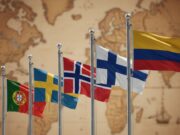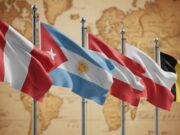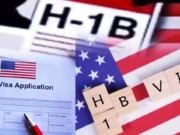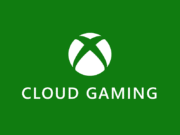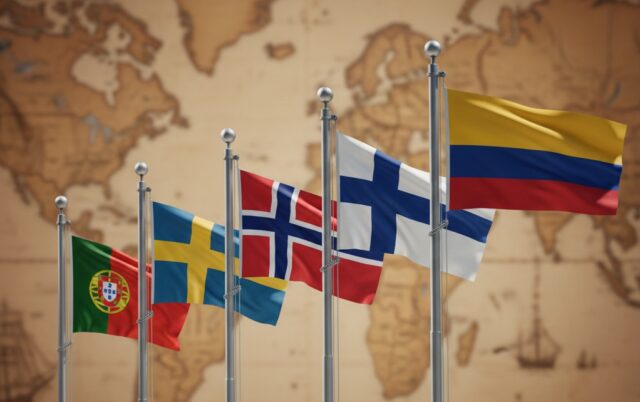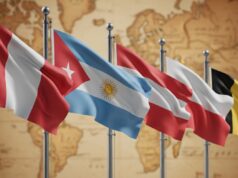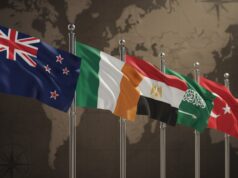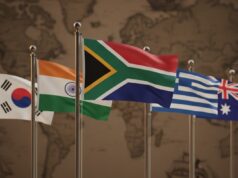Welcome, flag aficionados, to Part Six of our comprehensive series on National Flags! As your expert product reviewer, I’m thrilled to unveil another set of six captivating designs, each a vibrant testament to its nation’s cultural richness, historical journey, and modern identity.
Recap and Today’s Focus
Our extensive journey has now covered thirty diverse National Flags from around the globe. We’ve explored everything from ancient legends on Austrian banners to revolutionary symbols on Cuban and Peruvian flags. Each segment has highlighted the meticulous design and profound meaning embedded in these national symbols. For Part Six, we’re focusing on six more distinctive National Flags that showcase a blend of traditional motifs and contemporary statehood: Portugal, Sweden, Norway, Finland, Ukraine, and Colombia. Prepare to discover their unique stories, intricate details, and varied aspect ratios!
| Country | Flag Picture (Symbolic Representation) | Launch Date (Modern Version) | Shape/Size/Aspect Ratio |
| Portugal | A vertically divided field of green (hoist) and red (fly), with the national coat of arms (armillary sphere and shield) centered on the color division. | Adopted June 30, 1911 | Rectangular, 2:3 |
| Sweden | Blue field with a yellow Nordic cross extending to the edges. | Officially codified June 22, 1906 (Used historically since 16th Century) | Rectangular, 5:8 |
| Norway | Red field with a blue Nordic cross, fimbriated (outlined) in white. | Adopted July 13, 1821 | Rectangular, 8:11 |
| Finland | White field with a blue Nordic cross extending to the edges. | Adopted May 29, 1918 | Rectangular, 11:18 |
| Ukraine | Two equal horizontal bands of azure blue (top) and golden yellow (bottom). | Re-adopted January 28, 1992 (Used historically since 1918) | Rectangular, 2:3 |
| Colombia | Horizontal triband of yellow (top, half width), blue (middle, quarter width), and red (bottom, quarter width). | Adopted November 26, 1861 | Rectangular, 2:3 |
Detailed Review of Six Distinctive National Flags
Portugal: The Armillary Sphere of Discovery
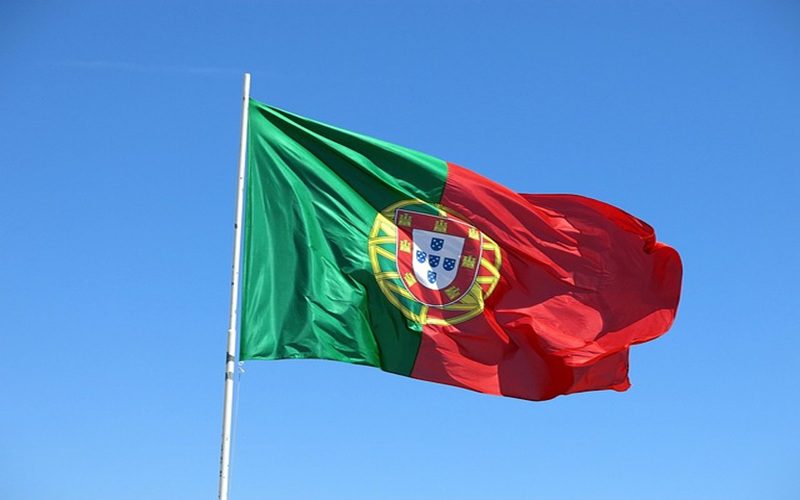
The Portuguese National Flag is uniquely divided vertically into green and red, with the national coat of arms prominently displayed. The green signifies hope for the future, while the red represents the blood of those who defended the nation. The armillary sphere, a navigation tool, symbolizes Portugal’s Age of Discoveries, while the shield within it represents its early kingdom. This complex and historically rich 2:3 rectangular flag was adopted in 1911.
Sweden: The Golden Cross of the North

Sweden’s National Flag is a classic Nordic cross design, featuring a golden-yellow cross on a blue field. The blue is said to represent truth, loyalty, and justice, while the yellow signifies generosity. The design is directly inspired by the Danish Dannebrog, one of the oldest National Flags we reviewed. This 5:8 rectangular flag has been in use in various forms since the 16th century, officially codified in 1906.
Norway: A Tricolour Nordic Cross
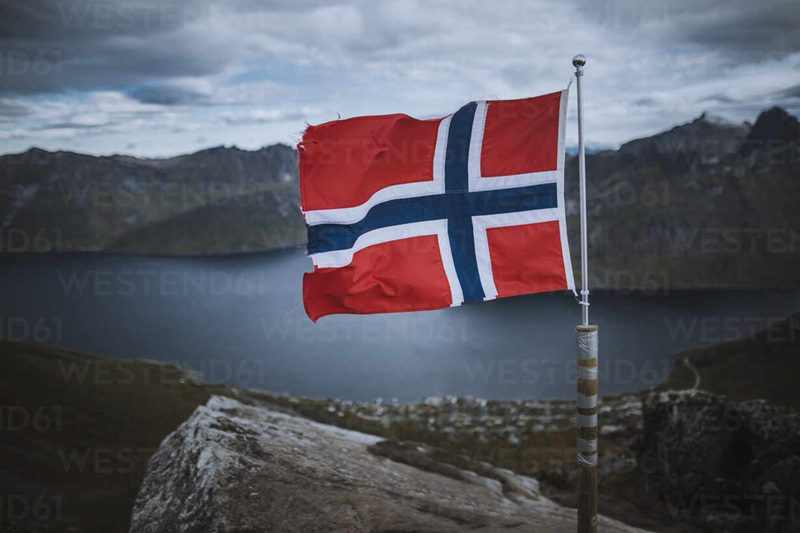
The Norwegian National Flag takes the Nordic cross design further by incorporating a tricolour effect. It features a red field with a blue cross, which is then outlined in white. The colours red, white, and blue are often associated with liberty and independence, reflecting the influences of the French and American revolutions. With its distinctive 8:11 aspect ratio, this National Flags design was officially adopted in 1821.
Finland: The Blue Cross of Lakes and Sky

Finland’s National Flag, often called Siniristilippu (Blue Cross Flag), is a striking white field with a blue Nordic cross. The white symbolizes the snow-covered land and the clear skies, while the blue represents the country’s thousands of lakes and the Finnish sky. Adopted shortly after gaining independence in 1918, this elegant 11:18 rectangular flag is a beautiful representation of the Finnish landscape and spirit.
Ukraine: Fields of Gold, Skies of Blue
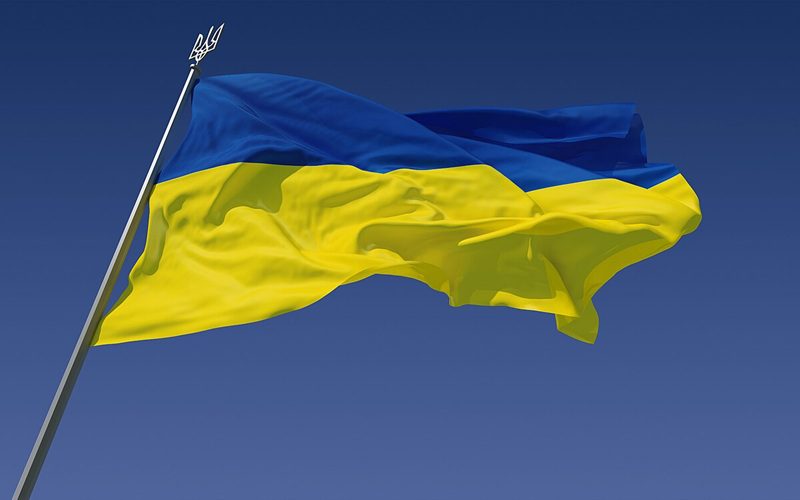
The Ukrainian National Flag is a simple yet profoundly symbolic horizontal bicolour of azure blue over golden yellow. The blue represents the sky, mountains, and streams, while the yellow signifies the golden fields of wheat, a vital agricultural product of the nation. This powerful 2:3 rectangular flag was re-adopted in 1992 after the collapse of the Soviet Union. It has served as a symbol of Ukrainian identity and sovereignty for over a century.
Colombia: The Divided Horizon
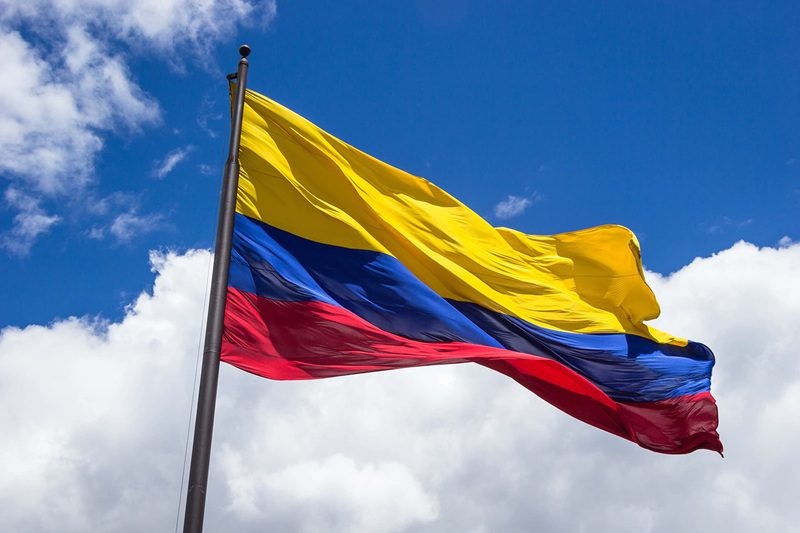
The Colombian National Flag is a vibrant horizontal tricolour, but with a unique distribution of colors: yellow occupies the top half, while blue and red each take a quarter of the bottom half. The yellow symbolizes the nation’s wealth and sovereignty; blue represents the oceans that border the country and the skies; and red signifies the blood shed for independence. This 2:3 rectangular flag, with its distinctive color distribution, was officially adopted in 1861, symbolizing its grand past.
National Flags: Enduring Cultural Emblems
This selection of National Flags in Part Six truly highlights the power of color and symbol to tell a nation’s story. From the maritime legacy of Portugal to the natural beauty depicted on Finland’s and Ukraine’s banners, each flag is a meticulously crafted emblem. The diverse aspect ratios, like Sweden’s 5:8 and Norway’s 8:11, add another layer of unique identity to these important national products.
FAQ About National Flags
What does the armillary sphere on the Portuguese National Flag represent?
The armillary sphere is an ancient astronomical instrument, symbolizing Portugal’s historic Age of Discoveries and its global maritime exploration.
What is the significance of the colors on the Ukrainian National Flag?
The blue represents the sky and mountains, while the yellow symbolizes the golden fields of wheat, a major agricultural product of Ukraine.
Which countries use the Nordic Cross design on their flags?
Countries like Sweden, Norway, and Finland (along with Denmark and Iceland) all feature the distinctive Nordic Cross on their National Flags.
Which of these culturally rich National Flags did you find most compelling, and why? Share your thoughts and tell us which other flags you’d like us to review in future installments! We’d love to hear from you.
Would you like me to generate a feature image (16:9 aspect ratio) for this sixth blog post?
#PortugalFlag, #SwedenFlag, #NorwayFlag, #FinlandFlag, #UkraineFlag, #ColombiaFlag, #NationalFlags, #NordicCross, #ArmillarySphere, #FlagFacts, #Vexillology, #AspectRatio, #EuropeanFlags, #SouthAmericaFlags






